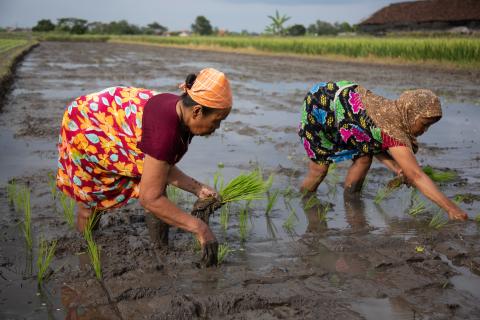First stakeholder feedback on the Global Risk Assessment
The launch of the Global Risk Assessment website last month has generated encouraging response from the FSC community. The majority of comments welcome the initiative, and many provide important details or suggestions for the improvement of the website.
The Global Risk Assessment website , jointly developed by NEPCon, FSC and the Rainforest Alliance, was launched in September 2008.
During the first month, the website has attracted more than 1,700 visits by people based in 62 countries. Many have also used the opportunity to comment on the first version of the website.
“The initial response from the FSC community is encouraging”, says Roman Polyachenko, coordinator of the Global Risk Assessment project. “We have received around 50 comments from a wide range of stakeholders around the world. While a couple of stakeholders express negative views on the overall approach, the vast majority are supportive towards the initiative as such. Many have provided constructive suggestions for the further development, and several comments include very detailed arguments and comments”.
Issues raised
Most comments received so far concern the approach used for the country-level risk assessments, in addition to several suggestions for improving the user friendliness of the website.
Almost all stakeholders have commented on the approach to High Conservation Value Forest (HCVF) or on the specific country assessment done within this risk category. One issue that is consistently raised concerns the interpretation of the phrases ’globally significant HCVF’ versus ’eco-regionally significant’, and how to differentiate between them. In most cases, the comments indicated that additional HCVF areas should be considered.
Policy Manager of FSC Pina Gervassi says: „From comments by stakeholders it is clear that FSC still needs to further explain the main intent related to HCVF which is to avoid threats at the ecoregion level. The fact that ecoregionally significant HCVF areas are considered based on mainly three international mapping initiatives needs to be reviewed by FSC".
Support and feedback needed
The website has been launched while still in a pilot phase in order to start stakeholder consultations at an early stage. More information is needed to fill in gaps – many areas are currently shown in red colour on the Global Risk Assessment world map, indicating unspecified risk simply due to lack of information. “The inputs we have received are really useful”, says Roman Polyachenko. “We will definitely implement some of the suggested changes. But to realize some very interesting proposals for improving the website, we will need to find external funding”.
The project is now looking for sponsors to develop the website further. The vision is that the next version will be built on a technical platform using a “Google Earth”-like solution allowing detailed geographical information such as the exact borders of endangered High Conservation Value Forests, indigenous peoples' territories, plantations of GMOs etc. Advanced software allowing conversion and integration of GIS data in different formats will greatly enhance the project’s capability to upload incoming data efficiently. Also, the design and user friendliness will be significantly improved.
Polyachenko also notes that the team would greatly appreciate more information about additional data sources at both country and sub-country level. “We would like to conduct more comprehensive stakeholder consultations, actively reaching out to a large number of organizations”, he says. “However, this requires external support”.
If you are interested in providing information, feedback or to explore sponsoring opportunities, please contact project coordinator Roman Polyachenko at e-mail rp@nepcon.org or mobile +372 53 479 925.



